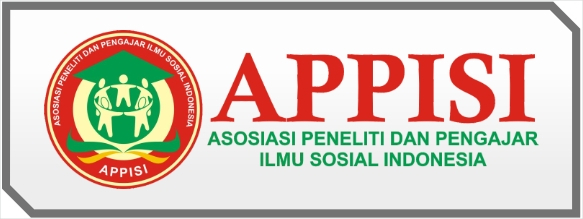THE EKOPUITIKA THEORY
DOI:
https://doi.org/10.55606/ijel.v1i3.21Keywords:
ekopuitika, Ecology, and PoeticsAbstract
This study aims to: (1) describe the sense of ekopuitika theory; (2) describe the working mechanism of ekopuitika theory; and (3) describe the application of the ekopuitika theory in the oral literature.
The theory used in this research is ekopuitika theory, ecology theory, and poetics theory.
The data collecting technique or data collection process utilized in this research are as follows: (1) recording technique, either audio or audiovisual, (2) notes, (3) rooted interview, (4) literature study and documentation analysis.
The finding of the research is (1) the meaning ekopuitika theory is literary theory/knowledge of poetry which is associated with the environment. (2) the working mechanism is started from analyzing the poetics theory which consists of: 1. Sound that includes: a) rima; (b) assonance; (c) alliteration; (d) anaphora; (e) efoni; (f) kakafoni; and (g) onomatopoeic. 2. Rime (metrum and rhythm) 3. Word includes: (a) vocabulary; (b) diction; (c) figurative language; (d) imagery; and (e) linguistic factors. 4. Phrase that includes: (a) nominal phrases; (b) verbal phrase; (c) the numeral phrase; (d) the adverb phrase; and (e) the prepositional phrase. 5. Sentence/array includes: (a) declarative sentences; (b) interrogative sentences; (c) the imperative sentence; and (d) the exclamatory sentence. 6. The discourse that includes: (a) cohesion and (b) coherence.
The next how it works, is further analyzed once more with the ecology theory that includes: (a) the representation of nature: plant, animal, mountain, water, sea, land, air, sun, and sky; (b) the manifestation of the representation of behavior: traditional event (ritual), religion, knowledge, cosmology, language, myth, art, moral, and housing.
After the ekopuitika theory applied in the oral literature there was a result that evidently for the representation of nature related to the plant and animal, while for the representation of the behavior associated with the traditional event (ritual) and language.
References
Adgar, W.N. et. al, 2000. “Advancing a Political Ecology of Global Environ-mental”. Discourse, CSERGE Working Paper GEG 2000—10.
Altenbernd, Lynn dan Leslie L. Lewis. 2000. A handbook for the Studi of Poetry. London: The Macmillan Company.
Atmazaki. 1993. Analisis Sajak: Teori, Metodologi dan Aplikasi . Bandung: Angkasa.
Barnauw, V. 1989. Etnology. Illinois: Dorsey Press.
Barry, Peter. "Ecocriticism". Beginning Theory: An Introduction to Literary and Cultural Theory. 3rd ed. Manchester: Manchester UP, 2009.
Bryant, R.L. 1998. “Power, Knowledge and Political Ecology in the Third World; A Review”. Progress in Physical Geography, Vol 22/1, PP 79 — 94.
Buell, Lawrence. The Environmental Imagination: Thoreau, Nature Writing, and the Formation of American Culture. Cambridge, MA and London, England: Harvard University Press, 1995.
Chandra, L. C., Endi, Y., Randa, A. G., & Putra, G. B. (2022). Perkawinan Adat Dayak Kanayatn dan Hubungannya dengan Perkawinan Gereja Katolik. ENGGANG: Jurnal Pendidikan, Bahasa, Sastra, Seni, dan Budaya, 3(1), 122-250.
Culler, Jonathan. 2000. Structuralist Poetics. London: Methuen dan Co. Ltd.
Diman, P. (2020). Nyanyian Adat Masyarakat Dayak Maanyan: Suatu Pendekatan Hermeneutika. Enggang: Jurnal Pendidikan, Bahasa, Sastra, Seni, dan Budaya, 1(1), 40-56.
Duran, Marcella. 2002. “The Ecology of Poetry”. Ecopoetics 2. vol 2: pp 58 — 62.
Endraswara, S. (2022). Teori Sastra Terbaru Perspektif Transdisipliner. ENGGANG: Jurnal Pendidikan, Bahasa, Sastra, Seni, dan Budaya, 3(1), 122-250.
Estok, Simon C. (2001). “A Report Card on Ecocriticism.” AUMLA 96 (November): 200—38.
Estok, Simon C. (2005). “Shakespeare and Ecocriticism: An Analysis of ‘Home’ and ‘Power’ in King Lear.” AUMLA 103 (May 2005): 15—41.
Hendra, A., & Marseda, I. A. (2022). Eco-Etika Dalam Budaya Manugal Dayak Ngaju (Tinjauan Ekologis Berdasarkan Ensiklik Laudato Si Art. 139). ENGGANG: Jurnal Pendidikan, Bahasa, Sastra, Seni, dan Budaya, 3(1), 122-250.
Jakobson, Roman. 1960 [1987]. “Linguistics and Poetics”. Dalam Pomorska, K. & Rudy, S. Roman Jakobson (Eds), Language in Literature, pp. 62—94. Cambridge, Mass, London, England: The Belknap Press of Harvard University Press.
Jakobson, Roman and Linda R. Waugh. 1987. The Sound Shape of Language.
Berlin/New York/Amsterdam: Mouton de Gruyter.
Kuper, Adam. 1999. Culture. Cambridge: Harvard University Press.
Levin, Samuel R. 1977. The Semantics of Metaphor. Baltimore: The John Hopkins University.
Linarto, L. (2015). Struktur Klausa Bahasa Maanyan Dalam Pangunraun Taliwakas Paadu (the Structure of the Maanyan Clause in Pangunraun Taliwakas Paadu). Jurnal Bahasa, Sastra dan Pembelajarannya, 5(1), 1-13.
Lincoln, Yvonna S & Egon G. Guba. 1984. Naturalistik Inquiry. London: Sage Publication.
Merchant, Carolyn. 1980. The death of Nature: Women, Ecology and The Scientific Revolution. San Francisco: Harper and Row.
Mitchell, Bruce. 1997. Resource and Environmental Management. Canada: University of Waterloo, Ontario.
Misnawati, M., Poerwadi, P., & Rosia, F. M. (2020). Struktur Dasar Sastra Lisan Deder. Pedagogik: Jurnal Pendidikan, 15(2), 44-55.
Misnawati, M. P., & Anwarsani, S. P. (2000). Teori Stuktural Levi-Strauss dan Interpretatif Simbolik untuk Penelitian Sastra Lisan. GUEPEDIA.
Muriyana, T. (2022). Kajian Sastra Bandingan: Perbandingan Aspek Citraan (Imagery) Dan Makna Dalam Puisi ‘Peringatan’karya Wiji Thukul Dengan Puisi ‘Caged Bird’karya Maya Angelou. ENGGANG: Jurnal Pendidikan, Bahasa, Sastra, Seni, dan Budaya, 3(1), 122-250.
Poerwadi, P., & Misnawati, M. P. Deder dan Identitas Kultural Masyarakat Dayak Ngaju. GUEPEDIA.
Pradopo, Rachmat Djoko. 2000. Pengkajian Puisi. Yogyakarta: Gadjah Mada University Press.
Rahmatullah, A. S., & Ghufron, S. (2021). The Effectiveness Of'facebook'as Indonesian Language Learning Media For Elementary School Student: Distance Learning Solutions In The Era of The Covid-19 Pandemic. Multicultural education, 7(04), 27-37.
Salleh, Muhammad Haji. 2000. Puitika Sastera Melayu. Kuala Lumpur: Dewan Bahasa dan Pustaka.
Skinner, Jonathan. 2001. Editor’s Statemen. Ecopoetics. Vol 1. pp : 5 — 8.
Spradley, James P. 1979b. Participant Observation. New York: Holt, Rinehart dan Winston.
Teeuw, A. 1987. Sastra dan Ilmu Sastra. Jakarta: Pustaka Jaya.
Todorov, T. 1984. Introduction to Poetics. Minneapolis: UM Press.
Usop, L. S. (2020). Peran Kearifan Lokal Masyarakat Dayak Ngaju untuk Melestarikan Pahewan (Hutan suci) di Kalimantan Tengah. ENGGANG: Jurnal Pendidikan, Bahasa, Sastra, Seni, dan Budaya, 1(1), 89-95.
Usop, L. S., Perdana, I., Poerwadi, P., Diman, P., & Linarto, L. (2021). Campur Kode Dalam Iklan Penawaran Barang di Forum Jual Beli Online Facebook Kota Palangka Raya (Kajian Sosiolinguistik). ENGGANG: Jurnal Pendidikan, Bahasa, Sastra, Seni, dan Budaya, 2(2), 18-31.



















